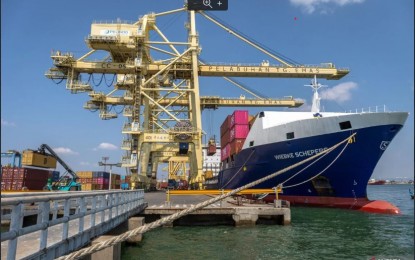JAKARTA – Indonesia is continuing trade negotiations with the United States despite having secured a 19-percent import tariff on Indonesian products.
“We want zero-percent tariffs on commodities that the US does not produce,” the Trade Minister said in Jakarta on Thursday.
Talks will continue until September 1, with room for reciprocal tariff adjustments.
The current 19-percent tariff was previously reduced from 32 percent.
The US President has allowed Indonesia the opportunity to negotiate further.
Indonesia plans to use this opportunity to request zero import tariffs on products not produced in the US, though specific commodities were not named.
The 19-percent tariff officially took effect on Thursday, August 7.
It is part of a broader deal between the two nations, under which US exports to Indonesia will be exempt from both tariff and non-tariff barriers.
With the tariff now at 19 percent, Indonesia has one of the lowest US-bound export tariffs in Southeast Asia, though still higher than Singapore’s 10 percent.
Copper concentrates and copper cathodes are among the products already granted zero tariffs, following strategic mineral trade talks between the two countries.
Indonesia is also pushing for zero tariffs on other key exports, including crude palm oil, rubber, meranti (Shorea) wood, and copper derivative products.
Tanjung Emas Container Terminal
Tanjung Emas Container Terminal is a major seaport located in Semarang, Central Java, Indonesia, serving as a key hub for trade and logistics in the region. Established to support economic growth, it handles a significant volume of domestic and international cargo, connecting Java to global markets. The port has modern facilities and plays a vital role in Indonesia’s maritime infrastructure, reflecting Semarang’s historical importance as a trading center since the Dutch colonial era.
Semarang
Semarang is the capital of Central Java, Indonesia, known for its rich history as a major port city during the Dutch colonial era. The city features a blend of Javanese, Chinese, and Dutch influences, with notable sites like the Sam Poo Kong Temple and the old town area, Kota Lama, which showcases colonial architecture. Founded in the 16th century, Semarang grew as a trading hub and remains an important economic and cultural center in Java today.
Central Java
Central Java, a province in Indonesia, is a region rich in cultural heritage and history, known as the heart of Javanese tradition. It was the center of powerful Hindu-Buddhist kingdoms like Mataram and Majapahit, and later the Islamic Sultanate of Demak, leaving behind iconic temples such as Borobudur (the world’s largest Buddhist temple) and Prambanan (a grand Hindu complex). Today, it remains a hub of Javanese arts, including batik, gamelan music, and wayang kulit (shadow puppetry).
Jakarta
Jakarta, the capital city of Indonesia, is a bustling metropolis with a rich history dating back to the 4th century as the Hindu-Buddhist port of Sunda Kelapa. It later became a major trading hub under Dutch colonial rule in the 17th century, known as Batavia, before gaining its current name after Indonesia’s independence in 1945. Today, Jakarta is a vibrant cultural and economic center, blending modern skyscrapers with historic landmarks like the Old Town (Kota Tua) and the National Monument (Monas).
United States
The United States, founded in 1776 after declaring independence from Britain, is a diverse nation with a rich history shaped by Native American heritage, European colonization, immigration, and civil rights movements. Known for its cultural influence, democratic government, and economic power, it features iconic landmarks like the Statue of Liberty, the Grand Canyon, and the White House. Its cultural identity reflects a blend of traditions from around the world, making it a global hub for innovation, entertainment, and multiculturalism.
Indonesia
Indonesia is the world’s largest archipelago, comprising over 17,000 islands, and is known for its rich cultural diversity, vibrant traditions, and stunning natural landscapes. Historically, it was influenced by Hindu-Buddhist kingdoms, Islamic sultanates, and European colonialism, particularly the Dutch, who ruled for over 300 years before Indonesia declared independence in 1945. Today, it is a multicultural nation with significant sites like Borobudur (the world’s largest Buddhist temple) and Bali’s Hindu temples, reflecting its layered heritage.
Singapore
Singapore is a vibrant city-state in Southeast Asia, known for its modern skyline, multicultural society, and bustling port. Founded as a British trading post in 1819 by Sir Stamford Raffles, it gained independence in 1965 and has since become a global financial hub. The country blends diverse cultural influences, with landmarks like Chinatown, Little India, and Marina Bay Sands reflecting its rich heritage and rapid development.
Shorea
“Shorea” likely refers to a genus of tropical trees in the Dipterocarpaceae family, which includes species like Shorea robusta (sal tree), native to South and Southeast Asia. These trees are culturally and ecologically significant, often used for timber and resin, and hold religious importance in Hinduism and Buddhism. For example, the sal tree is mentioned in ancient Indian texts and is associated with the birthplace of the Buddha.






